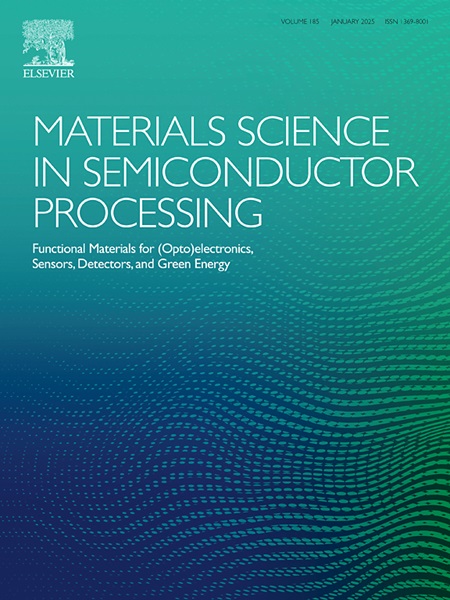Influence of post-annealing treatment on the performance of perovskite solar cells with different hole transport layers
IF 4.2
3区 工程技术
Q2 ENGINEERING, ELECTRICAL & ELECTRONIC
引用次数: 0
Abstract
The performance of perovskite solar cells (PSCs) is one of the key factors influencing their industrialization and market competitiveness. In this paper, post-annealing treatment, which is an effective and simple method, was used to enhance the performance of PSCs. PSCs with different hole transport layer (HTL) were prepared, and the effect of post-annealing treatment on the performance of PSCs was investigated. The results showed that post-annealing treatment could enhance the carrier extraction ability of HTL, reduce the defects in the perovskite layer, decrease non-radiative recombination, and effectively improve the device performance when PTAA was included in the HTL. After annealing treatment, it was found that the PCSs with NiOx/PTAA as the transport layer, the champion device of PSCs can achieve a PCE of 21.21 %. Compared to devices using only NiOx and PPAA as hole transport layers, the PCE increased by 36.9 % and 3 %, respectively. Meanwhile, when using NiOx/PTAA as the transport layer, compared to devices without annealing treatment, the PCE increased from 17.95 % to 21.21 %, resulting in an 18.2 % enhancement. The obtained results in this work can provide an important theoretical basis for researchers to understand the physical mechanism of post-annealing treatment on device performance and fabricate perovskite solar cells with high-performance.
退火后处理对具有不同空穴传输层的过氧化物太阳能电池性能的影响
过氧化物太阳能电池(PSCs)的性能是影响其产业化和市场竞争力的关键因素之一。本文采用退火后处理这一有效而简单的方法来提高 PSCs 的性能。制备了不同孔传输层(HTL)的 PSCs,并研究了退火后处理对 PSCs 性能的影响。结果表明,当在空穴传输层中加入 PTAA 时,退火后处理可以增强空穴传输层的载流子萃取能力,减少过氧化物层中的缺陷,降低非辐射重组,有效提高器件性能。退火处理后发现,以 NiOx/PTAA 作为传输层的 PCSs,其冠军器件的 PCE 可达到 21.21%。与仅使用 NiOx 和 PPAA 作为空穴传输层的器件相比,PCE 分别提高了 36.9% 和 3%。同时,当使用 NiOx/PTAA 作为传输层时,与未经过退火处理的器件相比,PCE 从 17.95% 增加到 21.21%,提高了 18.2%。该研究的结果为研究人员理解退火后处理对器件性能影响的物理机制、制备高性能的过氧化物太阳能电池提供了重要的理论依据。
本文章由计算机程序翻译,如有差异,请以英文原文为准。
求助全文
约1分钟内获得全文
求助全文
来源期刊

Materials Science in Semiconductor Processing
工程技术-材料科学:综合
CiteScore
8.00
自引率
4.90%
发文量
780
审稿时长
42 days
期刊介绍:
Materials Science in Semiconductor Processing provides a unique forum for the discussion of novel processing, applications and theoretical studies of functional materials and devices for (opto)electronics, sensors, detectors, biotechnology and green energy.
Each issue will aim to provide a snapshot of current insights, new achievements, breakthroughs and future trends in such diverse fields as microelectronics, energy conversion and storage, communications, biotechnology, (photo)catalysis, nano- and thin-film technology, hybrid and composite materials, chemical processing, vapor-phase deposition, device fabrication, and modelling, which are the backbone of advanced semiconductor processing and applications.
Coverage will include: advanced lithography for submicron devices; etching and related topics; ion implantation; damage evolution and related issues; plasma and thermal CVD; rapid thermal processing; advanced metallization and interconnect schemes; thin dielectric layers, oxidation; sol-gel processing; chemical bath and (electro)chemical deposition; compound semiconductor processing; new non-oxide materials and their applications; (macro)molecular and hybrid materials; molecular dynamics, ab-initio methods, Monte Carlo, etc.; new materials and processes for discrete and integrated circuits; magnetic materials and spintronics; heterostructures and quantum devices; engineering of the electrical and optical properties of semiconductors; crystal growth mechanisms; reliability, defect density, intrinsic impurities and defects.
 求助内容:
求助内容: 应助结果提醒方式:
应助结果提醒方式:


